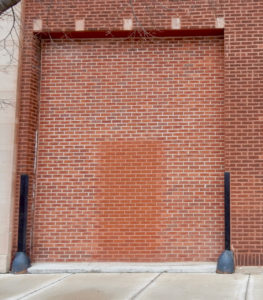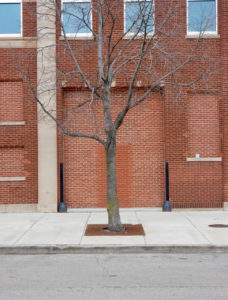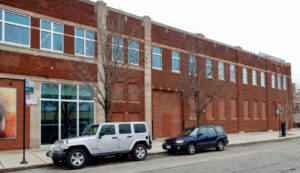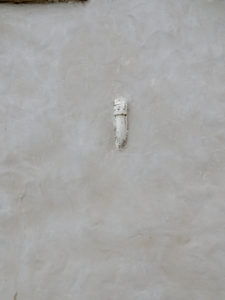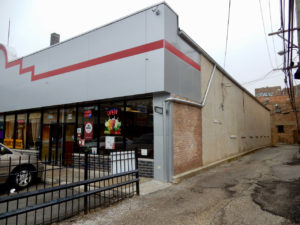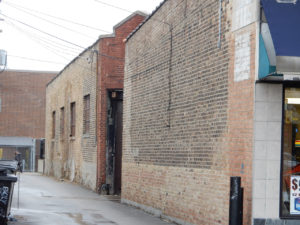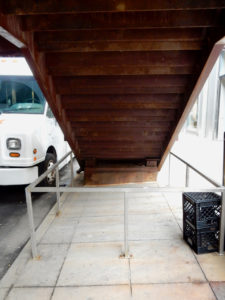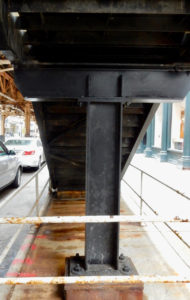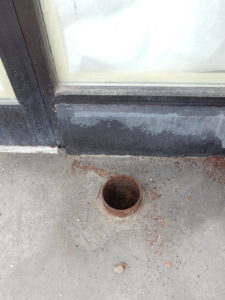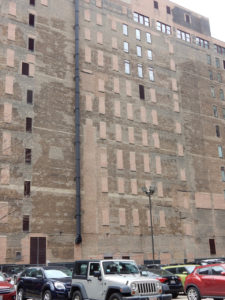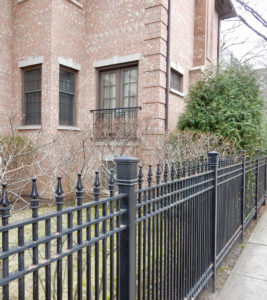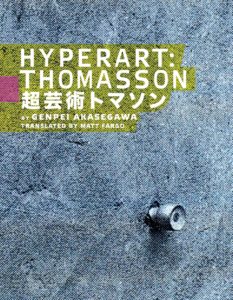 Hyperart: Thomasson, by Akasegawa Genpei. Kaya Press, 416 pages, 2010. ISBN: 978-1885030467. Paperback, $17.95.
Hyperart: Thomasson, by Akasegawa Genpei. Kaya Press, 416 pages, 2010. ISBN: 978-1885030467. Paperback, $17.95.
Why did it take me half a dozen years to discover this life-changing book, introducing a concept that fundamentally enriches my relationship to the built environment?
The idea is the Thomasson, proposed as a form of “hyperart.”
More or less a mashup of found art, readymades and roadside architecture, a Thomasson is a vestigial architectural appendage, part of a building or landscape that might once have had a purpose but is now useless, yet preserved nonetheless. A stairway to nowhere, for example, or a door that opens onto thin air, or a wall with a doorknob but no door.
The concept was invented (or perhaps discovered) in the 1970s by the late Japanese artist Genpei Akasegawa, who was enthralled with the perfect uselessness of these originally non-art objects. He found a poignancy, even beauty, in their persistence.
“… Thomassons are essentially schisms in man-made space, appearing along the fault lines of a city’s architecture,” he wrote. In the purest form, “a defunct and useless object attached to someone’s property and aesthetically maintained.” The Thomasson concept gives the architecturally useless a new identity that Akasegawa felt was pure beyond ordinary art, thus the “hyper” designation.
“… Art is actually a utilitarian thing that serves a purpose. An artistic purpose,” Akasegawa wrote. “Hyperart, on the other hand, doesn’t even serve an artistic purpose. It serves none of the myriad purposes that a thing can serve in life.”
“Art is something an artist sets out to make. But hyperart is something a hyperartist makes unconsciously — without any idea they are doing so. A work of hyperart can have an assistant, but not a creator. In the end, all hyperart has is the person who discovers it.”
So even if Art is for Art’s sake, it still has a utilitarian justification at its foundation. Hyperart is the purer thing because its original utility has disappeared completely, rendering it pointless until someone decides to appreciate it for essentially arbitrary reasons. A Thomasson also is valueless as a commodity, fixed in location and unsellable. To any but the Thomasson cognoscenti, it is an irrelevance.
Akasegawa was very much concerned with practices and ideas of the 1960s and ’70s avant-garde in Japan, including explorations of anti-art. Some of his book, originally published in Japanese in 1987 but not until 2010 in English, certainly went right over my head. I suspect I am taking the whole Thomasson concept much more at face value than I should. But even at my unsophisticated level it’s still a great idea, providing something interesting to look at, and for, in the world’s most prosaic spaces, of which there are plenty.
Some of Akasewaga’s ideas about what is art and who decides it also resonate with issues arising in the field of outsider and self-taught art.
“The modern art you see in galleries all over the place is, for the most part, a pale imitation of stuff like this,” Akasegawa wrote. Now consider these words from Jean Dubuffet:
“True art always crops up wherever you don’t expect it. Wherever no one has been thinking about it or uttering its name. Art hates to be recognized and greeted by name. It instantly takes off….
“It’s the false Mister Art who looks most like a real one, and the real one who doesn’t look like him at all!”
In the case of hyperart, the original creator had no intention of making art. With art brut, creators as often as not also did not think of their activities as art making. In both cases (always, with hyperart, sometimes with art brut) it is an act of connoisseurship that reveals the object to be art.
That has created some thorny issues in the art brut world, as has the transformation of the work into commodities and the original creators into marketable artists. Hyperart has no such problem since the objects have no present or future value, often vanishing as quickly as they are discovered (e.g., the building is torn down).
Art historian Reiko Tomii explores these considerations further in an essay attached to the English version of Akasegawa’s book.
“The artist, and the artist alone, was endowed with the prerogative to name something Art,” she writes. The goal with Thomassons was to “forage for what was not commodified, things that appeared impossible to package and market. With a stroke of ironic wit, when Thomasson-hunters found suspected non-commodities, they called them ‘properties,’ using the language of the real estate agent, who commodifies urban space. The fight with commodification is a losing battle, however, since … images and ideas get commodified as soon as they reach the threshold of awareness.
“…Thomasson offered us a way of looking at the city. Or a way of regaining some sense of the human imprint on the city in an era when that imprint was being rapidly erased. Thomasson-hunting was a sport for which you had to practice expanding your field of vision…. You have to look underneath and inside things as well, to peel back layers, finding mysteries wrapped within mysteries, and imagining greater mysteries somewhere beyond them.”
That practice of peeling back layers and finding mysteries in what otherwise seem the most obvious places is what can make the concept so life changing. Let the foraging begin!
The name Thomasson? That came in the 1980s, some years after Akasegawa had found his first instance. The label is a tribute of sorts to the American Major League baseball player Gary Thomasson, who finished his career striking out consistently, and expensively, for the Japanese team the Yomiuri Giants. The idea was that though Thomasson brought the team no utility, he was still out there every game.
One more note:
The same Japanese prefix that means “hyper” also can be translated as “ultra.” As Tomii points out, the resonance with the Ultraman series of robot/monster TV shows might make ultra the better translation: Ultraart, I like it.
Visit the Thomasson Observation Center Facebook page (in Japanese): https://www.facebook.com/thomasson.center/.
Meanwhile, here are some first fruits of my Thomasson hunting:
